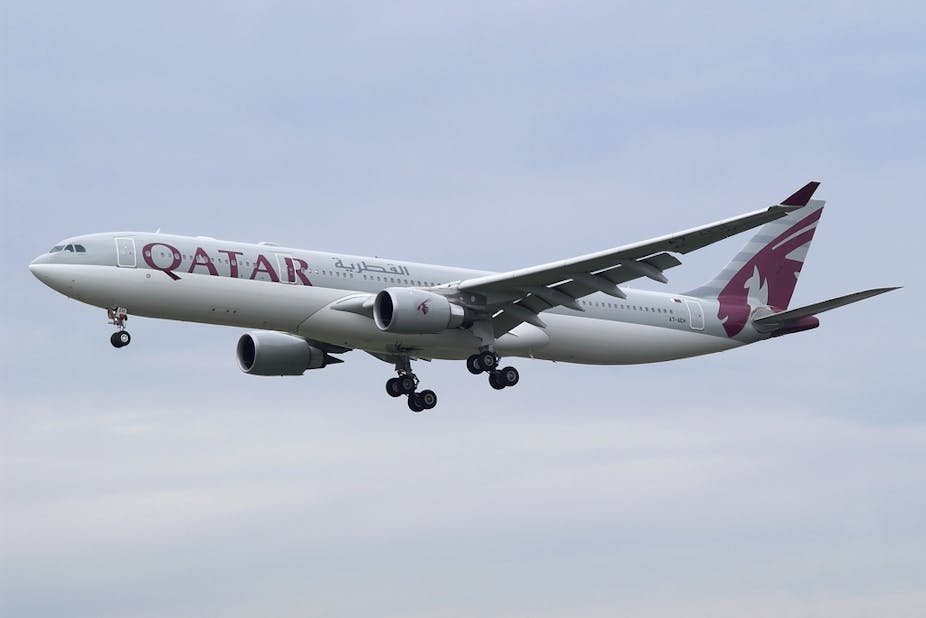A hoax bomb threat aboard Qatar Airways flight QR23 saw an RAF jet called into action to escort the plane to Manchester Airport. This is not a cause for concern. You can be assured that the cabin crew, pilots, police officers and Royal Air Force personnel knew exactly what they were doing – because they train for such eventualities.
Royal Air Force Typhoons practice intercepts over the North Sea. This is the process where an RAF fighter will fly up alongside another plane to “show the flag” and ascertain its intentions. These days RAF pilots tend to intercept colleagues. During the Cold War they regularly intercepted Soviet Tupolev TU-95 Bear long-range reconnaissance aircraft. Intercepts are the RAF’s bread-and-butter. They can be done in all weathers with total safety. In a civilian context they provide reassurance.

Rigorous training
Aviation is safe because those who work at the coalface of the industry – pilots, cabin crew, dispatchers, controllers, engineers, fuelers, check-in staff, security officers, etc. – take huge pride in delivering a safe and efficient service. The training, both initial and recurrent, is rigorous.
As an academic who works with the industry, I have attended many training courses. Seventeen years ago I did a cabin crew safety and emergency procedures course. It lasted five days, and combined theory with a large practical element, including putting out fires, dealing with unruly passengers, safely evacuating passengers down inflatable slides and inflating a life raft, getting in to it from the water (not easy) and paddling to safety. It all ended with a rigorous exam (I am proud to say I passed).
Passing that intense and exhausting course gave me more satisfaction than getting my doctorate.
Learning from experience
Aviation is safe because airlines routinely exercise their emergency response. Some years ago I participated in one such exercise at Stansted Airport. The exercise involved the airline’s entire back room staff, Stansted’s Fire and Rescue Service, the ambulance service, a wide-bodied airliner, volunteer “passengers” and observers (like me). On a designated evening the Head of Safety and Security sprang an emergency on the airline.
We knew it was coming, but we did not know what sort of emergency it would be. We powered up the Emergency Room, then decanted to the airfield for the practical exercise, which involved evacuating a wide-bodied airliner. Having safely evacuated it, we returned to Head Office for a structured debrief.
In commercial aviation, every incident, accident, near-miss and exercise is treated as a learning opportunity. No experience, no insight, is left unexamined. Lessons are broadcast to the industry. Those who work at the sharp,end are obsessed with active learning. That’s why aviation is so safe.
Keeping perspective
Despite recent incidents like the disappearance of Malaysia Airlines Flight MH370, the loss of Malaysia Airlines MH17 and the drama involving the RAF, aviation remains one of the safest forms of mass transportation. As aviation journalist Andrew Brooks explains:
It is now nearly 20 times safer to get airborne in an airliner than to travel by car. More people die in England and Wales from falling downstairs (568 in a typical year) than from air crashes.
Aviation attracts media attention. This is both a good and bad thing. It’s good when aviation’s myriad achievements are celebrated. It’s a bad thing when stories like the Qatar hoax get sensationalised and dominate the headlines.
When you read the story of flight QR23 remember how many flights were uneventful on the same day. Remember how many people were transported safely across huge distances six miles above the earth in temperatures as low as -55°C. Remember how little most of them paid. Remember how happy they were when they met their partners and family members in arrivals. A sense of perspective is useful.

